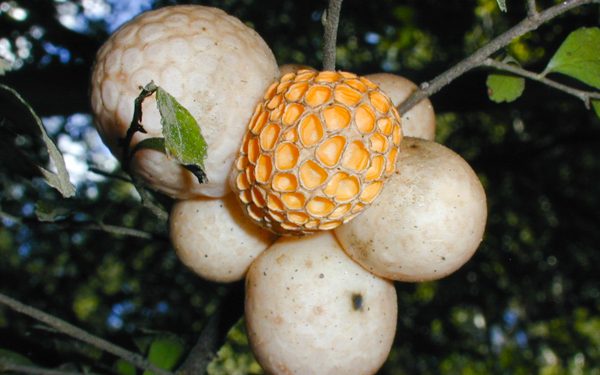by Alison Pouliot, reprinted from Fungimap Newsletter 57 According to Pliny, foragers seeking edible mushrooms should steer clear of serpents’ dens as their breath renders mushrooms toxic. Despite his counsel, great flourishing crops of poisonous Yellow ...
Author: Poly
Cortinarius metallicus – Steel-blue Rozites
(Synonym Rozites metallica) On the ground, amongst litter in native beech forests of Victoria and Tasmania. This large species has a very slimy blue-grey cap with scattered white veil fragments. A large membranous ring forms on the white stem which stains wate...
Cortinarius austroalbidus – Australian White Webcap
On the ground under eucalyptus. Most distinctive is the curry smell of drier specimens. This agaric is white to buff, the stem has traces of violet, and gills become rusty-brown with mature spores. Fresh specimens have very slimy caps and stems. The cobwebby v...
Asterophora mirabilis – Grey Jockey
(Synonym Nyctalis mirabilis) Only found on old, blackened fruit-bodies of agarics in the family Russulaceae, in the cool temperate rainforests of Victoria and Tasmania. This small parasitic species has a silvery-grey cap, grey stem and light brown gills.
Armillaria luteobubalina – Australian Honey Fungus
On dead or living wood. These large agarics form clusters around tree bases. The usually yellow-brown cap has a broad umbo; scattered minute scales on its surface feel like sandpaper. Below the membranous ring, the stem is dark, tough and fibrous. Spores are w...


